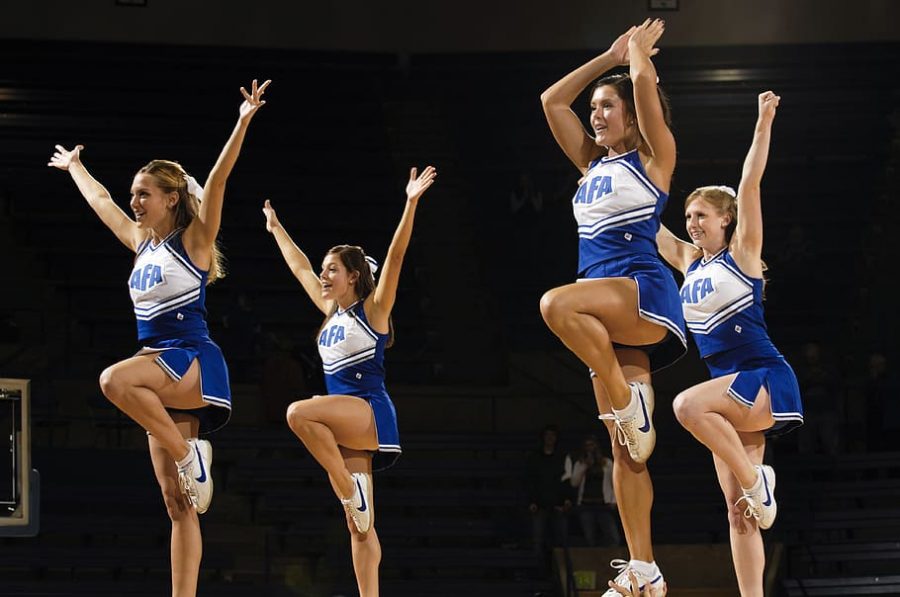Competitive Cheerleading
Cheerleading is often a controversial topic when it comes to whether it is a sport or not.
These four college competitive cheerleaders perform to the crowd while in a stunt.
January 28, 2020
Competitive cheer is an outside of school activity that usually takes place at private gyms. Girls and boys are placed on level-based teams that correlate to their skills. The early months of the season are spent learning skills and adapting to your new team. The latter months are spent competing against other teams.
What is competitive cheerleading? When most people think of cheerleaders, they usually think of people cheering on the sidelines of sporting events. But, there is so much more to being a competitive cheerleader than just cheering on other people.Teams will learn a two and a half minute routine at the start of the season. They will spend hours consistently working to perfect this routine before competing with it. Hours of practice, multiple days a week for months at a time to get it just right for competition season.
The major difference between school and competitive cheer is that school cheer doesn’t practice year-round and they also don’t usually compete. The point of competitive cheer is to work to compete against other teams in a specific division and age group.
A lot of people often say that competitive cheerleading isn’t a sport. That just is not true; ask any cheerleader or anyone who knows a competitive cheerleader and they will tell you that it is most definitely a sport. Teams run, work out and put in just as much work as any other sport. Not only do you cheer to compete, but you also cheer to perform. Cheer combines physical activity and performing to a crowd of people.
According to a Geisinger article, cheer is 16th on the most dangerous sport overall and the most dangerous for women. This is due to the number of high-risk concussions and other injuries. Cheerleaders are constantly working their bodies to do extraordinary things. Bases and Backspots are throwing their flying many feet into the air. This risk can often cause the flyer to fall to the ground and both the flyer and the bases can get hurt.
Routines require a lot of jumping, running and tumbling. Because of this many cheerleaders suffer from knee, hip, and ankle injuries or long-time damage. According to a Telegraph article, over 30,000 cheerleaders are treated for serious injuries a year due to the high impact sport.
Cheerleading is very hard, but it is also very rewarding. I know from experience that there is nothing like competing with your team on the floor and hitting a perfect routine. You grow so close to your teammates and enjoy so many moments with them throughout the season.




